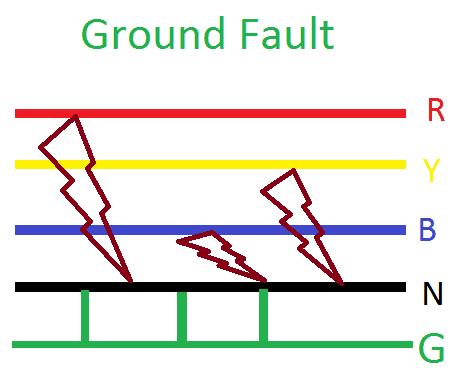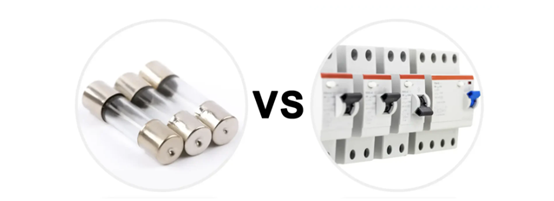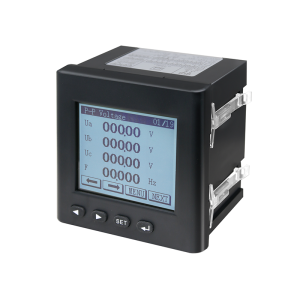A signal isolator is an electronic device that separates or isolates different sections of a signal transmission path to prevent direct electrical connection between them while allowing the transmission of signals. The primary purpose of a signal isolator is to protect sensitive equipment from high voltages, electrical noise, or interference, and to prevent ground loops or potential differences between circuits that could cause damage or degradation in performance.
Signal isolators are commonly used in industrial, control, and measurement systems to ensure that the signal from one part of the system can be safely transmitted to another without risk of electrical faults or noise affecting the signal quality.

Signal Isolator Working Principle
The working principle of a signal isolator involves the use of different techniques to transmit signals between isolated circuits. Typically, this is achieved by converting the electrical signal into another form (such as light or magnetic flux) for transmission, and then converting it back into an electrical signal at the receiving end. The isolation is typically achieved through transformers, optical isolators, or capacitive coupling.
For example, in the case of a transformer-based signal isolator, the input signal is passed through a primary coil, which induces a corresponding current in a secondary coil. The two coils are electrically isolated from each other, but the signal is transferred via the magnetic field. In optical isolators, the electrical signal is first converted into light using an LED, transmitted through an optical medium, and then converted back to an electrical signal by a photodetector. These methods provide high isolation between the input and output circuits.
Types of Signal Isolators
Signal isolators can be classified based on the technology they use for isolation:
Transformer-based Signal Isolators: These isolators use transformers to transfer signals between isolated circuits through electromagnetic induction. They are widely used in power supply systems and signal conditioning applications.
Optical Signal Isolators: These isolators use light to transmit signals, offering excellent isolation from electrical noise, making them ideal for high-frequency and high-precision applications, such as in communication systems and data transmission.

Capacitive Isolators: Capacitive isolators use capacitive coupling to transmit signals while isolating the electrical circuits. They are often used in low-power and low-frequency applications.
Magnetic Isolators: These use the principles of magnetic induction for isolation, offering good protection against common-mode interference, and are commonly used in industrial environments.

Solid-State Isolators: These isolators use semiconductor-based components like optocouplers or galvanic isolators to provide signal isolation in a compact and efficient design. These are often used in low-power and digital signal applications.
Advantages of Signal Isolators
Protection from High Voltages: Signal isolators protect sensitive electronic components from high-voltage spikes or surges, preventing damage to expensive and delicate equipment.
Noise Immunity: By isolating circuits, these devices reduce the risk of electrical noise and interference, ensuring high-quality signal transmission in environments with electromagnetic interference (EMI).
Prevention of Ground Loops: Signal isolators help eliminate ground loops, which can occur when different sections of a system operate at different ground potentials, leading to erratic or faulty system behavior.
Safety: They ensure electrical isolation between sections of a system, reducing the risk of electrical shocks, especially in industrial and control systems.
Signal Integrity: Signal isolators help maintain the integrity of the signal by preventing the transmission of unwanted electrical disturbances that may distort or degrade the signal.
Disadvantages of Signal Isolators
Complexity in Design: Depending on the type of isolator, the design and implementation can be more complex compared to direct electrical connections, requiring more space or specialized components.
Cost: Some types of signal isolators, especially optical isolators or solid-state devices, can be more expensive than simpler direct connections, increasing overall system costs.
Bandwidth Limitations: Certain isolators, particularly transformer-based ones, may have limitations in bandwidth and may not be suitable for high-speed or high-frequency applications.
Power Loss: Some isolators, especially transformer-based ones, can introduce power losses, affecting the overall energy efficiency of the system.
Applications of Signal Isolators
Signal isolators are used in a variety of applications where signal integrity, electrical isolation, and safety are paramount. Some of the most common applications include:
Industrial Control Systems: Signal isolators are used to protect sensitive control systems from high-voltage spikes or noise, ensuring the stable operation of machinery and automation systems.
Data Communication: Optical isolators and solid-state isolators are widely used in communication systems to maintain signal integrity and prevent interference from external electrical noise.
Measurement Systems: In instrumentation, signal isolators protect measurement equipment from electrical surges and ensure that signals are transmitted accurately from sensors to monitoring devices.
Power Supply and Protection: Signal isolators are employed in power supply systems to prevent ground loops and ensure safe and reliable operation of power distribution equipment.
Medical Equipment: In medical devices, especially those connected to electrical grids, isolators prevent high-voltage electrical interference and ensure patient safety.
Automotive Applications: Signal isolators are used in vehicles to isolate and protect different electrical systems, such as sensors and control units, from electrical faults or noise.

Conclusion
Signal isolators play a crucial role in ensuring the protection, reliability, and safety of electrical and electronic systems. By isolating circuits while allowing signal transmission, they prevent electrical interference, damage, and grounding issues, making them essential in a wide range of industrial, medical, and communication applications. Understanding the different types, advantages, and limitations of signal isolators can help engineers and technicians select the appropriate solution for their specific needs, ensuring optimal system performance and longevity.






